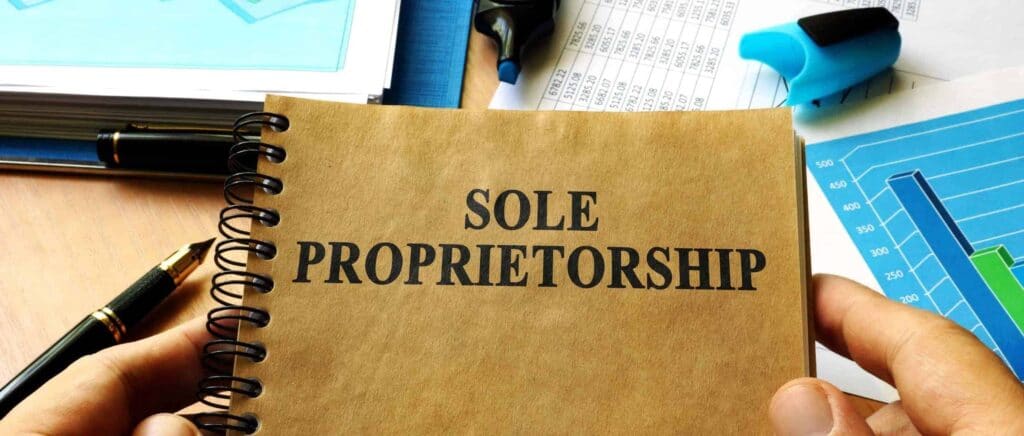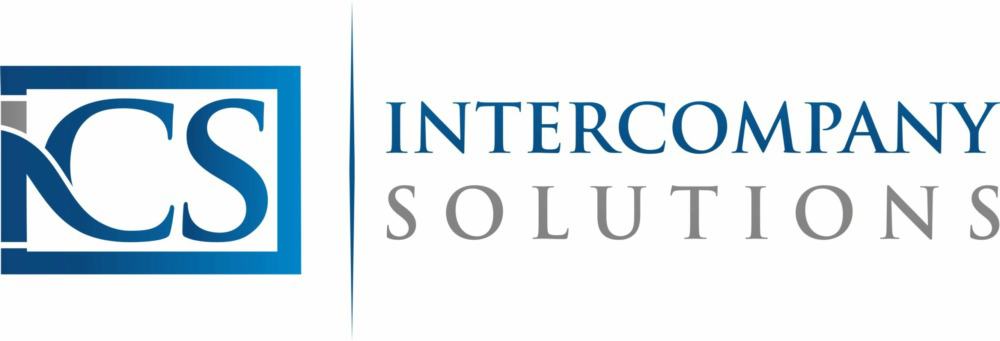
How to convert your sole proprietorship to a Dutch BV: tips and advice
Updated on 19 February 2024
Many entrepreneurs start with a sole proprietorship, only to want to convert their business at a later stage to a Dutch BV. There are many reasons to convert your sole proprietorship to a private limited company, most of which we will discuss in this article. One main reason is the fact, that above a certain income level, a Dutch BV becomes interesting for taxation purposes. This means you can save quite some money on an annual basis. Probably every entrepreneur has therefore asked him- or herself the question, whether it might not be more convenient to convert a sole proprietorship to a Dutch BV, or vice versa. In order to answer this question, several factors play a substantial role. We will discuss a number of advantages as well as disadvantages of changing the legal entity of your company to a Dutch BV, and we also inform you about the necessary steps you will need to take to accomplish this.
What is a Dutch Private Limited Company (BV)?
One of the most chosen legal entities in the Netherlands is the Dutch BV, which is comparable to a private limited liability company. Book 2 of the Dutch Civil Code regulates the Dutch private company with limited liability. It is a company with legal personality with a share capital divided into shares, in which each of the shareholders participates for one or more shares. If you want to incorporate a Dutch BV, you will have to go to a notary to realize this in order to obtain a notarial deed of incorporation. Since the BV is a legal entity, this means that it is an independent entity with rights and obligations. This also means the BV is independently subject to corporation tax. The shares of any BV are only transferable in a limited circle, depending on the statutory regulations regarding this matter. For any transfer other than that which can freely take place pursuant to the articles of association or the law, the articles of association of the BV must contain a so-called blocking arrangement, or an approval or offer procedure.
Limited liability means that the shareholders are not personally liable for what is executed on behalf of the BV. Every Dutch BV has a general meeting of shareholders and a board of directors. Those who are shareholders are kept in the shareholders' register. The general meeting shall, within the limits set by law and the articles of association, have all the power that has not been granted to the board of directors or another person. The board is charged with managing the BV. And, thus, represents the BV in and out of court. From the 1st of October 2012 it is possible to set up a Flex BV. This legislation applies to both new and existing BV's. The most important change that came with the implementation of the Flex BV is the abolition of the minimum capital of 18,000 euros one should invest. This was a very welcome change, since it allowed many start-ups a serious chance to compete, even without any starting capital. Nowadays, a Dutch BV can be established with any desired capital; even also a capital of 0.50 or 0.10 euro cents is sufficient. You also don’t need auditor's report anymore for the transfer of goods, and there is much more flexibility when it comes to the creation of your articles of association.
Advantages and disadvantages of owning a BV versus a sole proprietorship
Establishing a sole proprietorship is a very good way to start a small company, that you expect will grow during the first few years. You can benefit from several tax deductions, as well as relatively small start-up costs. For example, you don’t have to go to a notary to establish a sole proprietorship. If you are a freelancer, this type of business is also very suitable for you. Nonetheless, there are some disadvantages to a sole proprietorship. For starters, you are personally liable for anything you do with your company, including the creation of debts. If your company fails, you need to take into account that the creditors have a right to demand anything you owe from you personally. Also, as we have mentioned before, it is more profitable to establish a Dutch BV above a certain amount of yearly profits.
Advantages of owning a Dutch BV
As already explained above, one of the main benefits of owning a Dutch BV is the reduction of risks for you personally. This is due to the fact that the private assets of the director or the major shareholder are separated from the assets of the BV. Next to that, you also enjoy certain tax benefits. The annual profit of a Dutch BV up to € 200,000 is taxed with a percentage of 19% and above this amount with 25,8% corporate income tax. The income tax on profits distributed by the BV, the so-called AB levy, is 26,9%. As a result, the combined taxation of high profits distributed by the B.V. amounts to 45.75%. (25,8% VPB + 74.2% x 26,9% IB). Which means a rate advantage of 6.25% compared to the top income tax rate (52%). For distributed profits up to € 200,000, the rate benefit of the BV is much higher: (15% VPB + 85% x 26.9% IB) = 37,87%. If you subtract this from the 52% rate, this equals an advantage of 14,13%.
If the profit is not distributed directly by the BV, there is also a liquidity advantage in the BV of respectively 26,2% and 37% (the difference between 52% income tax and 25,8% and 15% corporation tax). If you own a company and need the cash flow for the growth of your company, then the BV is a very interesting option for you. The same goes for occasions in which you need to repay a loan or investor. In terms of loss relief, the carry back term of the BV is 1 year, whilst for a sole proprietorship this is a 3 year-period. In order to be able to settle losses carry forward, a period of 9 years applies to the BV and to the sole proprietorship. Normally, carry back requires a loss relief decision. However, a provisional loss relief of 80% can already take place by means of the corporate income tax return.
Furthermore, a director of a BV can build up pension rights at the expense of the profits of the BV. The extent of these rights depends on his years of service with the BV, as well as the salary the director pays himself. The owner of a sole proprietorship, who is entitled to self-employed deductions, can form an old-age provision via the Dutch fiscal old-age reserve (FOR). The annual allocation amounts to 9,44% of the company’s profits, with a maximum of € 9,632 in 2022. With higher salaries, a pension commitment by the BV often gives a better old-age reserve than the actual Dutch old-age reserve. Moreover, the size of the pension allowance is not, like the size of the old-age reserve allocation, assessed against the size of the company's tax assets. On top of that, business succession and cooperation as well as participation by employees or third parties can often be simpler and more advantageous for tax purposes with a BV, than with the sole proprietorship. The company must then be housed in a holding structure.
The disadvantages of a BV compared to a sole proprietorship
One of the disadvantages of the Dutch BV are the structurally higher administrative and advisory costs, when compared to a sole proprietorship. Nonetheless, if your profits start to rise, this becomes more of a small nuisance. Also; the Dutch BV has additional legal obligations. For example, publication of your yearly numbers in the Dutch trade register is compulsory, next to the fact that you need to pay yourself a minimum salary on a yearly basis. So you need to be sure that you can make a sufficient amount of money, in order for a BV to be profitable in your case.
Other reasons that might influence your decision
There are also reasons to choose a Dutch BV over any other legal entity, that aren’t tax-related. Many entrepreneurs choose a Dutch BV due to the professional image this legal entity automatically emits to the outside world. People who own a Dutch BV are seen as stable, sustainable and professional. A BV also offers a very clear and concise organizational structure, making it easy for you to hire appropriate staff and create separate departments. The evasion of personal liability also plays a huge role, since the director and/or shareholder is in principle not liable for any debts the BV makes. He or she only runs the risk that the paid-up capital and any loans granted will be cancelled out by losses.
You need to take into account, however, that banks often ask shareholders to guarantee loans to the BV. If the BV cannot meet its obligations in the future, the shareholder will be held liable as a guarantor. In addition, a director is liable for debts of the BV if it can be proved that there is improper management. For example, in the event of inability to pay taxes, a timely notification must be sent to the Dutch Tax Authorities under penalty of liability. With the introduction of the flex-BV legislation, the role of the director in dividend payments has become even more important. Under penalty of liability, the director must check whether the position of the company allows the dividend to be paid. In simpler words; if it can be proven that you could have avoided certain negative situations, and yet you chose to go through with risky behavior, you can be held liable for any problems or debts related to the Dutch BV.
How do you choose what is best for you?
The answer to the question whether to choose a BV or sole proprietorship depends on many factors. In each individual case, it must be considered whether the advantages outweigh the disadvantages. You should ask yourself questions such as:
- How much profit do I intend to generate during the next 3 years?
- What are my long-term goals for this company?
- Do I want to expand to different regions and/or countries in due time?
- Do I need to hire employees and/or corporate officers?
If you are unsure about which legal entity is best for you, feel free to contact Intercompany Solutions anytime. Our specialized team can assist you with making the best choice for you specifically, ensuring you choose the right type of legal form for your Dutch company.
Conversion of a sole proprietorship into a B.V.
Once you have made a decision about a possible conversion to a Dutch BV, you need to inform yourself about the ways in which this can be realized. In general, the conversion of a sole proprietorship into a Dutch BV can be done in 2 different ways:
- A taxed conversion
- A so-called ‘silent’ conversion
We will discuss both options below, so you can decide for yourself which option is most efficient for your company.,
The silent conversion explained
It is possible to bring a sole proprietorship into a BV or NV, without the entrepreneur having to pay tax: this is named a silent conversion. We speak about a silent conversion if, in essence, the entire company is transferred to the BV at book value. In that case, it is assumed for tax purposes that the company has not ceased its activities. There are of course conditions attached to such a silent input. In general, the conversion of a sole proprietorship into a BV leads to a tax strike of the company. And this leads to tax settlement: the hidden reserves and tax reserves are taxed. However, the Dutch law offers entrepreneurs the possibility to transfer their company to a BV without it coming to a tax settlement.
Standard conditions for a silent conversion
If you want to change your sole proprietorship or cooperation into a Dutch BV, you need to submit a written request to the Dutch Tax Authorities. If your request is granted, this is done so by means of a decision, that is also open to objection. This means that if you don’t agree with the decision, you can make this known. In this decision, the Dutch Tax and Customs Administration will also impose any additional conditions on the silent conversion next to the standard terms and conditions. These include (but are not limited to) the following examples:
- The BV replaces the former company as much as possible. This means that the BV must work with the company's old tax base values
- The entrepreneur must participate 100% in the subscribed and paid-up capital when the BV is established
- The BV may credit the converting entrepreneur for income tax and national insurance contributions that were due before the moment of conversion. In addition, a rounding credit may take place of 5% of the paid-up capital on the shares, but with a maximum of € 25,000
- The incorporation of the BV and the conversion of the company take place within fifteen months after the transition time
- If the entrepreneur transfers the company to an existing BV, a kind of profit split must take place. This standard condition serves to prevent the merger of the two companies from having material retroactive effect in the event of loss relief
- The company owner turning shareholder may not dispose of the shares in the BV, within a period of three years after the silent conversion. There are a few exceptions, such as disposal due to a share merger
- In general, the participation exemption cannot be applied to positive benefits from a participation up to the amount by which, at the time of transition, the fair value of that participation exceeded its carrying amount. Under certain circumstances, the BV is deemed to have benefited from a participation. For example, in the case of the disposal of a participation
- The BV must agree in writing to the set conditions and restrictions.[1]
Which reserves aren’t silently inflowable?
Certain reserves cannot be silently transferred to a BV. Even with a silent conversion, the entrepreneur must therefore settle these reserves. These include:
- the old-age reserve; and
- the return reserve in connection with a silent return from a BV in the past.[2]
Other important information regarding the silent conversion
With the silent conversion, it is very important that what the entrepreneur brings in actually qualifies as a material enterprise. It may happen that an entrepreneur divests certain activities before the contribution of his company. If the remaining activities no longer constitute a material enterprise, they cannot be silently transferred to a BV. This essentially means, that you need to own a company before you can convert it, which is the case if you already own a sole proprietorship. Levying income tax on the release can usually be prevented by applying the strike deduction, the SME exemption and the strike annuity.
Commercially, the transfer does take place at real value. In principle, the value of the entire company is converted into share capital. For tax purposes, this so-called commercial revaluation (high share capital) has not been recognized since 2001. This means that the silently transferred capital gains of the sole proprietorship will be subject to an IB claim of 25%. If the entrepreneur registers the silent letter of intent with the tax authorities before 1 October of a certain year, the conversion can take place retroactively for tax purposes as of 1 January of that year.
The taxed conversion explained
A taxed conversion is realized, when the original company is transferred to the BV at its actual value. By transferring to the BV, the sole proprietorship ceases to exist immediately. Tax must then be levied on the thereby released silent and fiscal reserves, goodwill and the possible release of fiscal old-age reserves, as well as divestments. If the strike profit exceeds the amount of the maximum applicable strike deduction, the SME exemption and the strike annuity, are taxed. The BV places the acquired assets and liabilities of the sole proprietorship on its opening balance sheet for the actual values. When the entrepreneur registers the letter of intent with the tax authorities, the conversion can take place with a retroactive effect of up to 3 months. Practically, this means that a registration before the 1st of April means that the company can be driven for tax purposes from the 1st of January of that year, at the expense and risk of the newly established BV.
Which method is best for your company?
Of course, you are wondering which method might suit your needs as a company owner best. The answer to the question whether a silent or taxed conversion method will be more advantageous in your case varies. In general, if there is a (very) high strike profit, the silent method is preferred. In that case, only through this method can the levying of income tax on the strike profit be postponed in its entirety. Intercompany Solutions has many years of experience within the field of company establishment and registration in the Netherlands. We can assist you with every aspect of company formation, continuity and taxation. On the basis of the above, we can conclude that the legal form you choose for your business is very important.
In a lot of cases, company owners are not very well acquainted with Dutch business and tax regulations. This means that you might possibly miss out on tax deductions, and in general options to save money with your business. If you have any questions as a result of reading our article about company conversion, please feel free to contact us for a free consultation and helpful advice. We have developed many standard procedures that determine the consequences for you, if you switch from sole proprietorship to a BV by considering several variables.
[1] https://www.taxence.nl/nieuws/aan-geruisloze-inbreng-in-bv-kleven-voorwaarden/
[2] Idem
Similar Posts:
- Foreign multinational corporations & the Netherlands annual budget
- Tax treaty denounced between the Netherlands and Russia per January the 1st, 2022
- How Developed Countries Collect Taxes on Bitcoin
- 5 Best EU Countries for Corporate Tax
- Want to innovate in the green energy or clean tech sector? Start your business in the Netherlands




